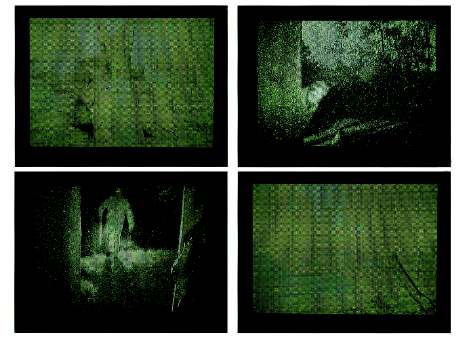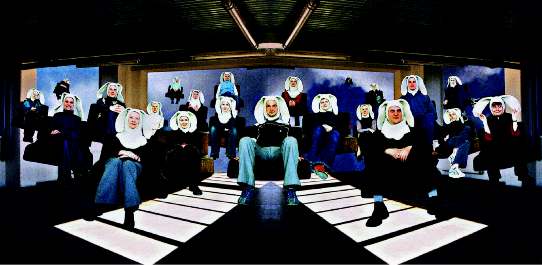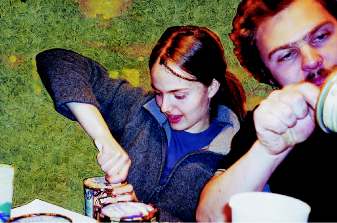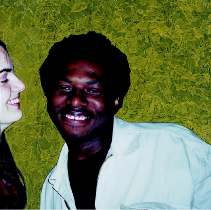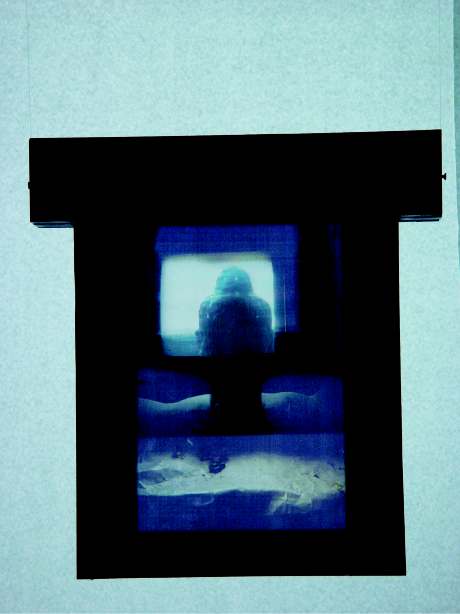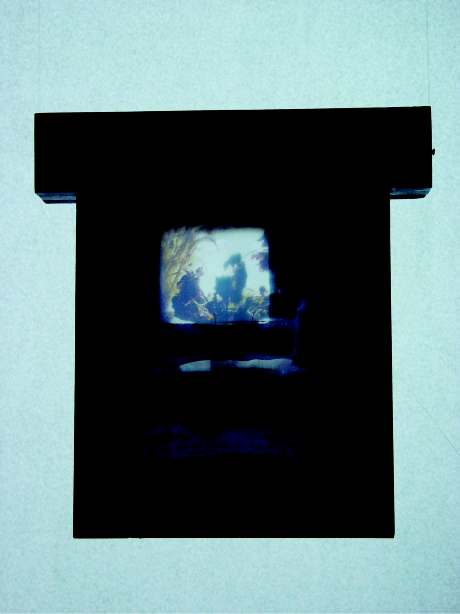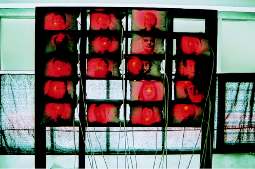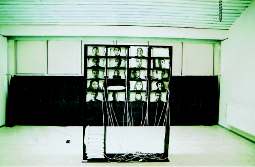Department of PHOTOGRAPHY AND NEW MEDIA at the Academy of Graphic Arts in Bratislava / 1st part Ján Krížik, Head of the Dept of Photography and New Media
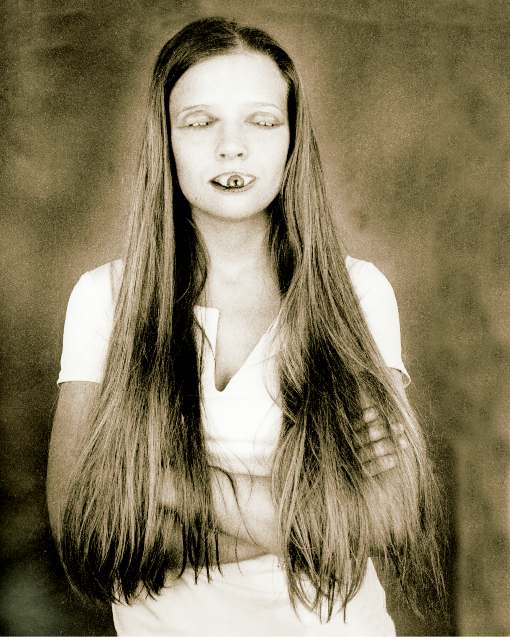
The Academy of Graphic Arts (AGA) in Bratislava was founded in 1949, but photography as a self-standing speciality began to be taught in 1949 only. For fully forty-seven years nobody found it strange that there existed no possibility of studying photography on a university level. Photography (of an excellent standard) was taught at secondary technical-art schools in Bratislava and Košice. Many of the graduates from these schools continued their studies at FAMU in Prague and some of them subsequently became "stars" of our photography. Unfortunately, quite a number of them disappeared from the Slovak environment.
The post-revolutionary year 1990 witnessed striking changes at the AGA. The academic staff was almost entirely reshuffled on elective basis and several new subjects were introduced in the curriculum. One of them was photography. That year saw the foundation of a photographic laboratory with Ľubo Stacho as head teacher. The studio formed part of the Department of Applied Art and Design.
In 1991 the staff was joined by Milota Havránková and in 1992 by Ján Krížik; that same year the discipline of photography became independent and formed a Department with the designation - not quite appropriate - of Department of Visual Media. Reflected in the name was a trend of the day intended to emphasize intermedia expressions.
Since 2002 it bears the name Department of Photography and New Media.
The following system now prevails at the AGA: the first year is divided into four semi-term courses, three of which are optional for students and only the fourth one is compulsory - a course of photography as such. The syllabus offers nine courses from various areas of fine arts. The student has thus an opportunity to test his talent in various artistic disciplines.
In the higher grades, students may choose a studio where they carry on in the study of their particular discipline. In the fourth year they finish their baccalaureate studies. On gaining their Bachelor's degree - lasting two years - graduates may enroll for doctoral studies.
At the Department of Photography, Ján Krížik offers a Preparatory Course which has for aim to acquaint students with photography as an authentic area of fine arts, standing in its own right, to teach "non-photographers" the principles of the photographic technique. The semi-term course ends with an exhibition and public evaluation of students' works.
Two studios are available to students in the higher-grades.
One is in the charge of Milota Havránková. The aim of her studio is (I quote) "free classical and multimedia photography and directing the student to free and utility photography". The name of the Studio is "Atelier of Creative Photography".
The Studio headed by Ľubo Stacho is termed "Photography and Intermedia Overlaps". It has for aim (again I quote) "l. To introduce the student into the wide range of photographic medium and its overlaps - video, computer-processed images, installations, etc. Communication in the studio respects creativity and freedom of expression. 2. An author's independent expression conditioned by study and theoretically-conceived problems."
In addition, the following subjects are taught at the Department: Landscape photography (Jozef Sedlák), Documentary Photography (Pavol Breier), Photography of Architecture (Ľubo Stacho), Photography of Advertisement (Rudolf Lendel), Fashion Photography (Ján Krížik), Imaginative Photography (Ján Krížik). Theatre Photography (Pavol Breier), Portrait and Body Photography (Rudolf Lendel), Photographic Techniques (Jozef Lietavec), Dramaturgy of Visual Media (Ľuba Velecká), Principles of the Technique of Photography and Video (Sylvia Saparová).
Furthermore, students receive education in the domain of the history of art, aesthetics, psychology, etc. in a very broad choice within the framework of accredited studies.
Active at the AGA is also the Museum Gallery where teachers and students of the Department hold exhibitions and which is associated with the Month of Photography in Bratislava. The premises of AGA also host seminars and lectures during the Month of Photography. Dunae Michals - an American photographer of Slovak extraction - also had an exhibition together with members of the Department of Photography and New Media in the Gallery Medium.
The AGA and also our Department take part in international students' and teachers' undertakings within the projects ERASMUS and SOCRATES. We entertain a large number of significant contacts with numerous academies and universities in Europe and the USA.
STUDENTS / 2nd part / by Silvia Saparová
From the name itself it is obvious that artistic aspirations and works of the students at this department in the framework of forms and tendencies of contemporary art shift and expand the boundaries of the photographic medium itself. Fine arts have gone through significant changes in the last few years. Post-modern thought has opened a way for joining together art genres and disciplines, and in this way it has made possible the connection and mutual linking of several visual fields. Photography, as one of the significant phenomena of contemporary art, is not only included in almost all fields of the contemporary art creation, but it has also direct impact and significant influence on the general efforts to achieve the widest possible diapason of multimedia applications. Works of the students of photography at VŠVÚ are based on mastering all basic principles of photographic image and by its means also a complex problem of technical image, which is necessary for the understanding and orientation in our visual culture.
The works of these young authors are considerably varied and touch many aspects of contemporary fine arts. Apart from classic photography, students work also with other media, such as video, digital photography, computer etc. Their works are both a reflection and a result of multimedia overlaps - their single outputs are in the form of interactive CD ROMs, web sites, multimedia installations, etc. Students in their works respond especially to the problem of identity and place of man in today's society, which is so characteristic of the present time; they also study the significance and influence of the media used - both on the perceivers of art works and on authors themselves. The above-suggested reciprocity of that relationship is considerable, and its negative or positive consequences as well. Marko Horban, Peter Drmlík, Ján Záborský, Matej Longauer, Olja Stefanovic, Petra Bošanská, Petra Áčová, Kristína Jadroňová, Magda Stanová and other students in the studio of the senior lecturer Milota Havránková are devoted to the work with video, computer and different visual-photographic outputs from these media.
Marko Horban, the 3rd grade, in his video-clip Cover (2003), by means of a symbolic figure of a typical American comics, so-called "superman and spiderman", responds to the artificially created images of our world and closes his story with his own "natural" departure form that reality.
Peter Drmlík, the 3rd grade, in his film "The Jump" (2003), responds in a parodic manner to the influence and relevance of the TV medium.
Olja Stefanovic, the 3rd grade, works with photographic image within the framework of installations. Her work entitled Mobile Windows (2003) represents a collected archives of certain moments from her life (the author used the real library archive) and their subsequent archiving in connection with so-called "mobile windows" (real portable windows connected with multi-layer transparent photo-image), which fulfill the function of a representative symbol of the memories and ideas from her world.
Matej Longauer, the 4th grade, in his film Stories of R. H. uses typical image cuts from the aggressive videogames in contrast to real urban environment and real people. He drags us into his bizarre "videogame", where we find special weapons aiming at banal scenes from urban life and helpless citizens, who suspect nothing bad.
Ján Zábranský, the 6th grade, intentionally creates web sites - such as www.vegaz.sk entitled Pornography is legal?
Petra Áčová, the 4th grade, in her work Artificial and Natural, by manipulating photography and installing "vivid", light designed photographs, creates pseudo-real mutants - animals, which seemingly exist in our fauna and flora.
